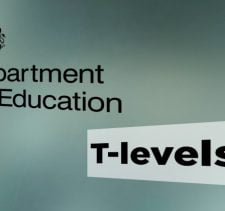When to Walk Away from a School – A Parent’s Guide to School Visits and Choosing the Right School
Background – Increases in the Number of High Performing Schools in the UAE
“As the number of choices grows, the negatives escalate until we become overloaded. At this point, choice no longer liberates, but debilitates.”
The Paradox of Choice – Why More is Less. Barry Schwartz.
The decision on where to educate our children is up there with the most important, as parents, will ever make.
It seems so simple. Choose a school. Job done.
But of course, this sort of simple analysis is nothing like the reality.
It was so much simpler in the UAE, and particularly in Dubai and Abu Dhabi, even just a decade ago. The number of high performing schools were limited, parents could reduce the options by proximity to where they lived – and the real battles were with securing a place at all in over-subscribed schools.
Today nothing could be more different.
Investment in education in the UAE has seen an exponential increase in the number of schools opening in the emirates. British curriculum schools have seen a 7% growth year-on-year over the last 6-years and growth in school openings and expansion is evident across every curricular. More importantly, standards and the quality of schools have risen. It is not just that we now have more schools to choose from. We have very good ones.
Parents now have genuine choice and, with few exceptions, a guarantee that once they have chosen the school their children will be offered a place.
Gone are the (not so distant) days of having to register children at birth to secure a coveted school place – and paying handsomely for the privilege. Thanks to strategic investment in education and the guiding hand of UAE regulators like the KHDA and ADEK, there has been an epic shift in the balance of power to parents. No longer are parents fighting for limited school places. Instead, it is schools that are utilising increasingly competitive enrolment strategies to entice applicants. If visiting a school use to feel like an examination and inquisition for parents (Am I good enough?), today application assessments are now a two-way street.
Demand once outstripped supply in high performing schools. Now it is the reverse. Parents have power.
But has this made it easier for parents? Almost certainly not.
With choice and opportunity comes the need for school visits – and more of them.
It is not – and has never been – possible to choose a school from web sites, reviews (like our own), recommendation or school marketing blurb. Every child is different. Their needs, potential, ambition and personalities are different. Schools are the same. They have a life, a feel and different ethics and approaches to education.
A school that is best for one child will be worse for another – and this is decided as much by seeing a school and gauging its fit as much as anything you can find written down on paper.
We have dealt elsewhere with ways of narrowing down options. It is simply not possible to visit a hundred schools – even if the pressure to do this can seem overwhelming to do things “properly”. But the list includes:
- Budget – how much can you afford?
- Location – can you commute easily to the school?
- School reviews – Does the school deliver what is important for my child? These can be found both here, on SchoolsCompared.com, but also on our sister site, WhichSchoolAdvisor.com
- KHDA or ADEK ratings – is it rated a Good school or above by the school regulators?
- Recommendation – have other parents recommended the school with recent, first-hand knowledge.
But after this, having drawn up a shortlist of, ideally, three schools, it falls to visiting schools to make the final decision.
And it is here too, that you must be ready to walk away from a school – however it seems to stack up on paper, if something is not right.
When to Walk Away from a School – the SchoolsCompared Guide for Parents 2020
When we do school visits as part of reviews of a school we have a checklist of things we look for. We do not advertise these to schools – and this is the first time we have revealed some of the things we look for. There are others we will not include, because it is important that we are able to properly review schools without them being prepared.
If at any point in the following areas you are given an answer, or you get a feeling, that something is not right you should think about walking away. It is easier to do so now, than later when your child is enrolled at the school.
Unhappy Employees
From gate security and the receptionist to Teaching Assistants and cleaners, a warm welcome and common courtesy offer a small but telling glimpse into the ‘feel’ of a school and how it treats its employees. If employees are treated differently, or without respect, what will children learn if they attend the school?
A leadership team that respects, appreciates and inspires its staff and faculty creates a positive and happy environment that, in the best schools, cascades contagiously through school life.
This amounts to more than just passing courtesies. In top schools it manifests itself into an embedded culture of tolerance, kindness, respect and purpose. Exactly the type of atmosphere in which children learn. Exactly the type of atmosphere in which children are happy.
We all know how damaging our own work lives can become by office politics. A culture of recognition and respect across a company keeps its staff and is a happy productive place to work.
Christina Hinton, an Education Neuroscientist at Harvard, captures this well. She found that a student’s happiness at school is dependant on the teacher-pupil relationship and the broader dynamics of all relationships within schools. A student’s happiness, she notes, has a direct impact on their grades and whole child development. Her research shows that happiness is positively associated with intrinsic and extrinsic motivation for all students:
“If schools want to support student well-being and achievement, they should take seriously nurturing positive relationships across school life.”
Questions to ask in this area include:
- What is the turnover of all staff at the school? And why?
- What is the turnover of teaching faculty? And why?
- Directly ask a teacher, ideally one you see as part of a visit but are not introduced to, whether they are happy at the school. Ask them “what are the best things about the school” and what they would like to happen at the school to make it even better.” The answer to the last part of this question will tell you the most. If they say it is perfect, or alternatively stream marketing speak, you know you do not have an answer you can rely on.
- Directly ask a teacher how long they have been at the school and why they left their last school.
- Ask teachers if they have ever seen a case of bullying, and what happened.
- Speak to the receptionist and make small talk. Do they have time for you? Are they interested in you and your child? Do they smile? Do they make you believe that they are happy at the school?
The same holds true of security and other support staff. They can often tell you as much about a school as anything you are told on a visit.
You may well find that those showing you around a school start to get worried if you veer off the tightly controlled visit schedule and the defined individuals that you are supposed to be speaking with. This too, will tell you something.
Limited Play Facilities
“Play is the highest form of research.”
Albert Einstein
Most schools in the region boast amazing science facilities, state-of the-art language development departments, outstanding classrooms, mathematics provisions and well-stocked divisions devoted to the arts. But many parents overlook the importance of good recess play areas and, for older children, areas set aside for meeting, debate, socialising and downtime.
More than just a place to have break time for the students, free-play and meeting areas have proven to have a resounding positive impact on student development and exam results year-on-year. The impact of these lies in the power of creativity that comes from imaginative play and respecting the individual child. Creativity and empowering children with spaces to mix and learn independently or together directly influence innovation, risk taking and ‘out of the box’ thinking.
Children who have received an education bathed in creativity and empowerment are more adaptable to a change, are more resilient and more likely to succeed in a variety of commercial enterprises in adulthood.
But the other telling feature here is that many schools know they have to provide a tick list of facilities. A sports hall, a swimming pool, IT equipped classrooms – and so on – dependent on the fees. It is in the smaller areas that are hidden that you can tell the real commitment to invest in children.
So, what should you look for?
- With younger children, look for play areas with interesting toys and educational learning equipment as well as physical apparatus for development of motoring skills.
- For older children, look for individual study pods, communal social areas (that look inviting) and tea and coffee making facilities. In British schools these are often called Common Rooms, but they can take the form in UAE schools of specific Sixth Form independent study areas and areas in which students can mix and socialise. Often the less that these look like being part of a school the more it becomes clear that the school is investing in young adults and properly preparing them for life beyond school.
STEM Not STEAM Philosophy
Science. Technology, Engineering and Mathematics (STEM) are vital core subjects. However, any school that doesn’t give equal status to the Arts, turning STEM into STEAM, is missing a fundamental area of learning. This applies equally for “scientific” children as those who are interested and excel in the Arts or Performing Arts.
Asking questions about academic life and coding, should be balanced by questions about the artistic life of a school. How many productions does the school produce each year? How many children are involved? What musical instrument lessons are provided? What ECAs are available across the Arts. Does the school offer a recording studio for media production? Always ask to see the Art Department of schools. If the work on display here does not make you gasp with admiration something is not right. We have never been to a high performing school in which our visit to the Art Department has not made us wish to buy some of the student’s art works to take home with us or simply left us astonished and moved.
Find out if the school has a drum kit. If it does, this provides an example of investment. A drum kit requires soundproofing and many school will avoid the expense and logistics.
The capacity to create and excel is in every child. A high performing school will find that gift – and it will showcase it. If you visit a school that is clinical with no children’s work on display – walk away.
The more facilities and areas a child can explore across every aspect of learning in a school, the more likely it is that the school will be able to provide an educational environment in which the needs of your child can be met at each stage of their education.
A broad education, one which covers the spectrum of the Arts and Sciences and broader whole child development gifts children the capacity to be creative and adaptable. Google looks for creativity and independent thought more than it looks at qualifications when it considers who to employ. A school that doesn’t encourage learning through art and creativity is behind the teaching curve.
A Lack Of Community Feeling
Numerous studies across the globe have proven the positive link between student’s success, parent’s involvement and the school community. A recent briefing by The National Education Association (NEA), the largest labour union and professional interest group in the United States, states:
“When schools, parents, families, and communities work together to support learning, students tend to earn higher grades, attend school more regularly, stay in school longer, and enrol in higher level programs”.
A school community culture doesn’t happen by accident. It is created and nurtured and guided by the leadership team.
There are a number of signs present throughout a campus that indicate the school’s commitment to community. You should look for all of the following:
- The core values of the school should be proudly displayed. In many of the best schools in the UAE you will not be able to turn a corner without coming face to face with an inspiring quote.
- School houses. Ask whether the school has a house system – and how it works. Always ask if the school will let children transfer to a different house. A child may wish to do this, for example, because of friendship groups that only develop after a child has joined a school. A school that is inflexible and no child-centric will often have fixed rules.
- The school’s website, reception area, social media presence and frontline staff should all represent these values in some way. If a school says it places creativity first, and you find absolutely no evidence of creativity in the school, something is clearly not right.
Parents make up an important element in a school’s community so looking out for signs that the school cares about the parent’s inclusion is important. Look for community events like international day celebrations, parent coffee mornings, an active parent council, fitness groups and an on-site café, as signs of a welcoming and happy community. A dedicated area for parents to meet and have coffee, or meet with teachers, is a strong indicator of a school that genuinely invests in, and cares about, its links with parents.
High Staff Turnover
Dubai is a transient place, so it is normal to expect a staff turnover that is higher than in countries such as the UK, Denmark and Korea where the teacher turnover rate is approximately 3-5% per year. In Dubai, for example, the annual staff turnover rate lies around 15%.
The impact on children of teachers leaving cannot be overstated. If 15 in every 100 teachers leave each year this will have impacts.
A school that looks after its teachers and cares about retention will have lower rates of staff turnover. Happy teachers that are professionally inspired and fulfilled will inevitably invest more in their children.
In some cases, school turnover can be a good thing. This is true of new schools in which often the turnover rate will be higher. Principals need time to bed in their opening school with the very best teachers. In the early days of a new school often this will mean losing teachers that do not fit with the needs of children and the ethics of the school.
Dr Abdulla Al Karam, Director General of the KHDA, states that the high turnover is a concern where quality is concerned:
“Initial statistics we collected show that the turnover of teachers and administrators in schools is about 15 per cent. This affects our efforts to improve the quality of education offered.”
Trudi Jones, Head History at Dubai College, believes that high staff turnover is due to teachers not being motivated to stay:
“Whilst there are all sorts of reasons that teachers move on, ultimately when a school has a low turnover it usually to do with having a good educational philosophy. This is often found in non-profit schools where teachers witness funding going in the right direction and in schools that treat their staff well. This can create a sense of belonging in a school with a more experienced teaching body, which can only enrich and provide more seamless education for the students. When a school and the teachers are all about educating children they have a common goal and are invested in staying.”
When an established school has a staff turnover rate annually above 20% for two or more years you should be asking why.
Other areas to look for
- Look for young children that are not being cared for. If you see a child crying with teachers paying no attention to him or her that should be a red flag. We have seen this in a number of schools.
- Look for facilities that are pristine and never been used. We have seen examples of schools with fabulous music rooms where the plastic has not even been taken off the instruments.
- See if children engage with you. If a child approaches you or smiles that is a clear sign of a school that encourages confidence in its children.
- Are children quiet or engaged with each other. We have been to schools in which children look down and the halls are silent. If children appear pensive, worried or unhappy, this should raise red flags.
- Do children engage with their teachers and the school Principal. With younger children there should be a buzz of energy and laughter.
- Ask to see the Arabic subjects area of the school. If it is located in a dark area clearly isolated from the rest of the school, you should be concerned. One of the great opportunities of schools in the emirates is to learn a language and be able to apply it. The best schools make this part of school life and interesting. Look at Arabic classrooms. Are they filled with the same sort of celebration of each child’s work as other classrooms? Are there fabulous books in Arabic that you would want to read? Do they have the Arabic translation of Harry Potter in their library?
Bottom line? When to Walk Away from a School.
Never feel pressured. Even if you, and your child, take to a school from the first moment, always give time at home to absorb and think through what you have experienced. For the school that makes it to the top of your shortlist after your initial visit, we think you should always visit twice. There will always be questions that arise after you have had time to think.
If you visit a school and it does not feel right, you should walk away. However glossy the brochures, you should never question your knowledge of your child and what is right for them.
Try not to have preconceptions when you visit a school. Some schools produce glossy brochures and web sites. Some do not. When you visit a school, the marketing becomes secondary. This is the day the real choices begin.
In the case of younger children, remember too, none of us can know what the eventual needs of our children will be.
Will they be academic, or technical, or both? Will they be artistic, sporty or musical, or any combination of these. Will they struggle in some subject areas? Ideally you want a school that will be able to meet the needs of your child as they grow up and their unique gifts, abilities and needs evolve. That means you should be looking at a school that offers as much as possible – and the support for children when they need it most.
Look at the breadth of different subjects the school offers at Sixth Form. Do they offer subjects like psychology, economics and music – or is it just a small cluster of core subjects? The smaller the number of subjects, the more likely children will have a restricted education.
Do schools offer technical stream options like BTEC in British schools or the IB Career-related Programme in International Baccalaureate schools? Do American schools offer Advanced Placement? Choice and opportunity here are every bit as important as the facilities and bells and whistles a school is able much more easily to wow you with on a visit.
The last question we always ask on one of our visits is whether the school is one we wish we had attended when we were children. What seems a simple question generally inspires exactly the sorts of questions that are important in making your final decision.
Most of us at school remember the subjects in which we excelled and those in which we did not. The importance of the teacher in both cases cannot be overstated. You cannot, of course, know with certainty, how good a teacher is from a single visit. But what we all of us do know in our daily lives are the people we warm too and the telling questions that reveal whether someone is genuine, caring and likely to go the extra mile. If you are met with arrogance and disdain, or are made to feel like a number, is this really the type of school that is likely to be right for your children?
If you ask some or all of the questions we suggest above, we think and hope you will uncover a lot about a school. In some cases you might certainly learn things that make you embrace a school as the perfect choice for your child. You may very well also learn things that make you want to walk away.
Walking away from a school now will be a lot easier than doing so later when relationships have been established. Moving to other schools where peer groups have already been established is not easy for children, particularly when they are younger. Once you have made your choice you will never know if it was the optimal one. But you will be certain that you have given it your absolute best shot and your children could ask no more of you.
©SchoolsCompared.com 2020. All rights reserved.





































































Thanks a lot Jane. It’s so relieving after reading this article. I was following similar process inadvertently, to choose school for my kids. Now i’m sure, i’m on right path